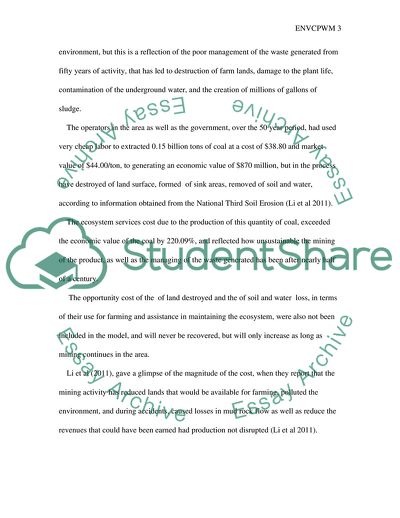Cite this document
(The Pollution from Mining Assignment Example | Topics and Well Written Essays - 2000 words, n.d.)
The Pollution from Mining Assignment Example | Topics and Well Written Essays - 2000 words. https://studentshare.org/environmental-studies/1753123-environmental-impact-and-cost-of-managing-mining-waste
The Pollution from Mining Assignment Example | Topics and Well Written Essays - 2000 words. https://studentshare.org/environmental-studies/1753123-environmental-impact-and-cost-of-managing-mining-waste
(The Pollution from Mining Assignment Example | Topics and Well Written Essays - 2000 Words)
The Pollution from Mining Assignment Example | Topics and Well Written Essays - 2000 Words. https://studentshare.org/environmental-studies/1753123-environmental-impact-and-cost-of-managing-mining-waste.
The Pollution from Mining Assignment Example | Topics and Well Written Essays - 2000 Words. https://studentshare.org/environmental-studies/1753123-environmental-impact-and-cost-of-managing-mining-waste.
“The Pollution from Mining Assignment Example | Topics and Well Written Essays - 2000 Words”. https://studentshare.org/environmental-studies/1753123-environmental-impact-and-cost-of-managing-mining-waste.


